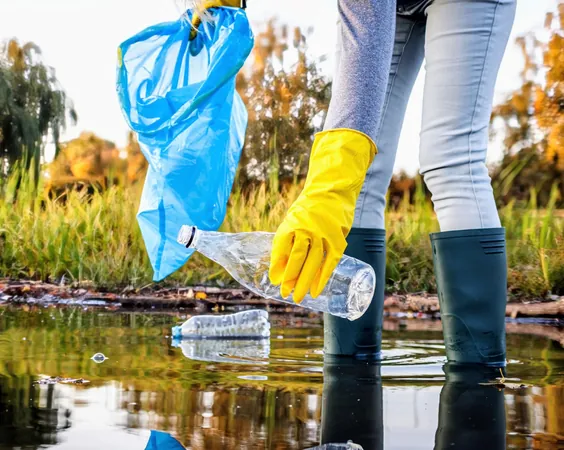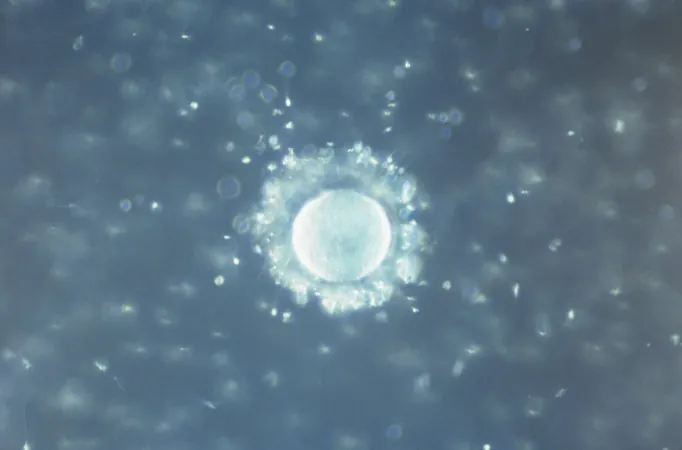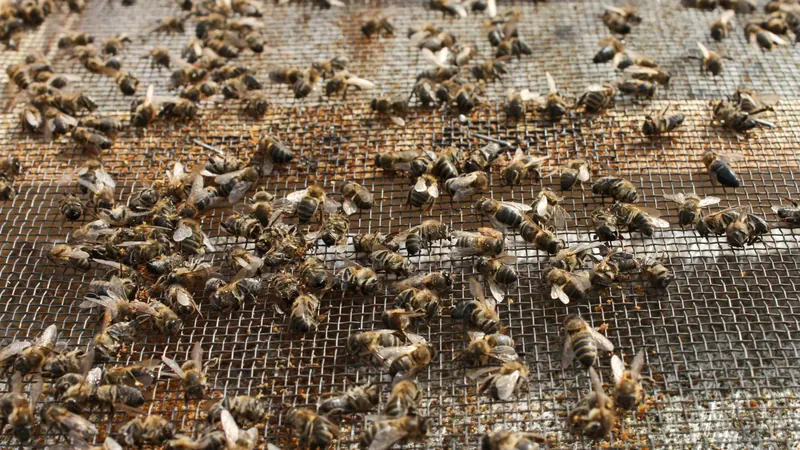
Groundbreaking Remote Sensing Technology to Stop Plastic Pollution at the Source
2024-12-29
Author: Wei Ling
Groundbreaking Remote Sensing Technology to Stop Plastic Pollution at the Source
In a shocking revelation, researchers have identified that a significant percentage of plastic polluting our oceans originates from rivers rather than coastal areas. While oceans have garnered attention as the primary victims of plastic pollution, freshwater sources, such as rivers and lakes, have been alarmingly overlooked.
A pioneering group of scientists from the University of Minnesota, Twin Cities, seeks to change this narrative with their innovative research, recently published in the prestigious journal Nature. Their study explores cutting-edge remote sensing technology as a vital tool for monitoring and potentially removing plastic debris from prominent rivers like the Mississippi.
The Plastic Pollution Crisis: A Call to Action
Plastic pollution in the oceans has escalated into a pressing international crisis, and the United Nations Environment Program (UNEP) ranks it among the foremost environmental challenges of this era. Despite the rivers acting as conduits for plastic waste flowing into oceans, they have not received the same level of attention. This has prompted the research team to explore forward-thinking strategies to address this issue.
Conventional strategies for monitoring plastic pollution involve labor-intensive manual sampling methods. While effective, these methods are costly and time-consuming, often leading to incomplete data and slow responses.
Harnessing the Power of Remote Sensing
The study harnesses the capabilities of remote sensing technology, utilizing specific wavelengths of the electromagnetic spectrum to identify various types of plastic in freshwater systems. By focusing on the unique spectral signatures of plastics, the scientists can differentiate them from natural materials such as sediment and organic matter.
Lead author Mohammadali Olyaei, a PhD student in the Department of Civil, Environmental, and Geo-Engineering, explains, “This technology could allow us to simultaneously detect different types of plastics in the water. This information is crucial when using other technologies like drones for effective cleanup efforts in natural habitats.”
Innovative Real-World Testing
The team conducted experiments at the St. Anthony Falls Laboratory, an ideal setting where the Mississippi River flows through their facility. This location allowed them to test their remote sensing technology under real river conditions, employing a spectroradiometer in tandem with a DSLR camera to classify and monitor various debris types.
This powerful combination not only facilitates the identification of plastic debris but also sets the groundwork for activating drone technologies aimed at cleanup. The dual functionality of monitoring and removal places remote sensing at the forefront of combating plastic pollution.
The Ripple Effect on Environmental Health
Co-author Ardeshir Ebtehaj, an associate professor in the same department, warns about the ramifications if action isn't taken: “If we can develop this technology at the headwaters of the Mississippi here in Minnesota, we can shield downstream states and the entire ocean from the encroachment of plastic pollution.” He emphasizes that as plastic waste disperses further, controlling it becomes increasingly complex.
By tackling plastic pollution right at its source, the researchers aspire to alleviate the downstream impacts that threaten aquatic ecosystems and marine environments.
Next Steps: A Broader Vision
Looking ahead, the research team aims to expand its study to larger river systems, examining how plastic debris moves through freshwater networks and refining strategies for removal. This broader research will not only help identify the origins of the pollution but will also pave the way for targeted intervention strategies.
Alongside Olyaei and Ebtehaj, the team comprises Christopher R. Ellis, a senior research associate at the St. Anthony Falls Laboratory. The study received backing from the Minnesota Environment and Natural Resources Trust Fund (ENTRF), a dedicated fund for preserving Minnesota’s natural resources.
Taking Action for Our Ecosystems
This cutting-edge study signifies an essential leap toward addressing the often-ignored issue of plastic pollution in freshwater systems through remote sensing technology. By adopting advanced monitoring techniques, researchers present an efficient and scalable solution that promises to benefit local ecosystems and contribute to global environmental health.
The urgency for early intervention in freshwater ecosystems cannot be overstated, especially now that we have the tools to prevent plastic waste from contaminating our oceans. Continued research and innovation in this area could transform how we safeguard our rivers, lakes, and oceans, ensuring cleaner waters for generations to come.
This ground-breaking work is available for further reading in the journal Nature Scientific Data.




 Brasil (PT)
Brasil (PT)
 Canada (EN)
Canada (EN)
 Chile (ES)
Chile (ES)
 Česko (CS)
Česko (CS)
 대한민국 (KO)
대한민국 (KO)
 España (ES)
España (ES)
 France (FR)
France (FR)
 Hong Kong (EN)
Hong Kong (EN)
 Italia (IT)
Italia (IT)
 日本 (JA)
日本 (JA)
 Magyarország (HU)
Magyarország (HU)
 Norge (NO)
Norge (NO)
 Polska (PL)
Polska (PL)
 Schweiz (DE)
Schweiz (DE)
 Singapore (EN)
Singapore (EN)
 Sverige (SV)
Sverige (SV)
 Suomi (FI)
Suomi (FI)
 Türkiye (TR)
Türkiye (TR)
 الإمارات العربية المتحدة (AR)
الإمارات العربية المتحدة (AR)